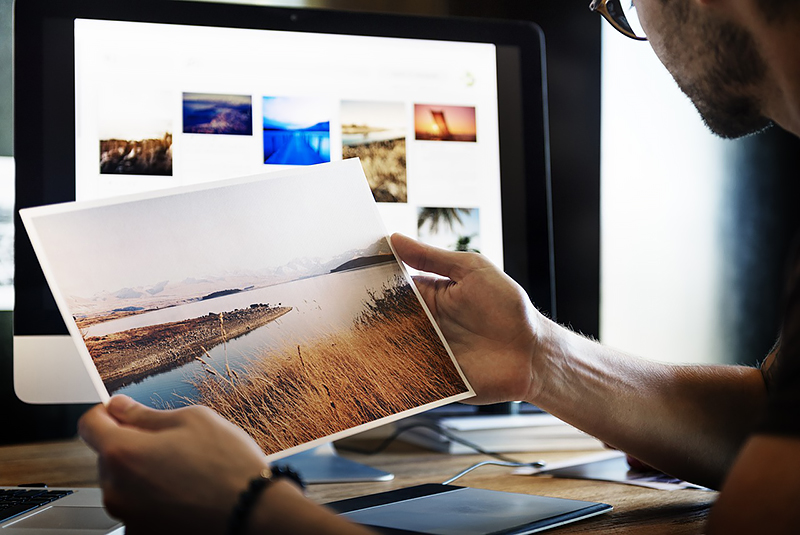Photographers are the people who make our world exciting and thriving. They inform and inspire and never cease to amaze us. Photography is a universal language. A language without words that doesn't age. A great photographer's work cannot be forgotten.
That's why we need
photographers today. They are the people who can bring clarity in a world full of chaos. They are the people who show us the beauty that surround us and call to attention the things we miss in a different part of the continent. When our hearts are directed with honesty and accuracy, we understand the story and most importantly, we understand ourselves.
Photography is all about living in the moment. And yes, photography can beat time. Through a photo, we can keep the memories of our loved ones alive. Our future generations can see things that happened in the past. Photography presents to the them an opportunity to alter the behavior and trajectory of their lives.
Photographers are passionate and dedicated people who are willing to share the experiences of life from their daily encounters. Being a photographer means communicating with people's hearts and guiding them. And this can only be done effectively if the photographer has the essential tools and he or she is using them in the right manner.
Before publishing the photos you take on a daily basis, you have to edit them. Editing your photos enhances clarity and vibrancy of your pictures. No one loves looking at boring pictures. That's why you should aspire to be a great photographer. No one remembers the average photographers but the great ones always live in our hearts.
Just like driving a car or writing an Edu Birdie review, photography is a skill that requires patience and practice to become extremely good at it. As you progress on you journey to becoming a great photographer, you need to learn and understand the tools you can use to improve your editing skills.
Today, we will discuss eight essential tools that you need to develop your editing skills as a photographer. Let's get started!
1. Crop
When taking pictures, you are likely to cover both relevant and irrelevant things. For people to clearly perceive what you're trying to communicate, you need to include relevant things only.
Crop is an essential photo editing tool because it allows you to remove a portion of the image that could be irrelevant. It also allows the photographer to shape the image around the area he or she intends to keep while removing the rest.
Other tools related to crop include straighten and rotate tools. Straighten allows you to specify a reference point. Great photographers recommend rotating the image and then cropping it. Rotate, as its name suggests, enables you to rotate the image.
2. Resize
This tool allows the photographer to adjust the size of an image by changing the number of pixels or dots that are covered by the image file. When uploading a photo to your papersowl review website, it's important to adjust the image size to ensure the loading process does not take too long.
If you want to print a large image, you can easily enlarge it to the size you prefer using the resize tool. When enlarging a photo, most programs try to fill in missing spaces if the photographer resizes the image beyond its dimensions.
The picture won't appear very clear if the photographer resizes the image way beyond its original size. When resize is combined with crop, the results could be amazing especially if the photographer wants to print an image with a specified size.
3. Brightness and contrast
This tool helps you adjust the overall brightness of the image. The tool can have a dramatic impact if your image is too bright or dark. Maybe you took a photo when sun was shining brightly and the relevant details don't make a huge impression or you took a photo at night and you need some important details to be visible. Brightness and contrast adds emphasis to images that appear dull or flat.
4. Saturation
Using this tool, the photographer can increase the color and vibrancy of his or her image. However, the tool should be used in moderation. When used excessively, skin tones might begin to appear unnatural and unattractive. Saturation can sweeten the look of an image especially if the image scenic.
5. Curves and levels
Curves and levels are refined versions of brightness and contrast. Levels allow the photographer to alter the white and dark points of his or her image thereby changing its looks completely. It helps in making dark points darker and white points whiter. It adds lightness and vigor to an image. It is useful in enhancing skin tone while keeping the elements of the image unchanged.
Curves is much more flexible because the photo editor can transform the characteristics of an image in a sophisticated manner. The editor should avoid using these tools in excess because the results will be abnormal or appear unreal.
6. Sharpen
This tool allows the editor to enhance the edge contrast of an image thus making small features stand out clearly. Sharpen is always used after resizing because sharpening relies heavily on the image size. The editor can sharpen specific parts of an image such as the eyes or hair to draw attention towards them.
Sharpening can also be applied on the whole image to make everything clear. The Unsharp Mask allows the editor to specify how much you'll use sharpening to prevent the image from appearing unreal.
7. Channel Mixer
With the channel mixer, you can easily adjust the amount of blue, green and red in your image. Its real value is brought out when the editor can tailor a black and white conversation to include a specified amount of blue, green and red that a black and white converter cannot handle.
The defaults are usually set at 33% for each (blue, green and red). You can try out different percentages and see how the elements in your image change and relate to each other.
8. Smart Fix
This tool combines most of the tools discussed above to help you adjust different elements to improve the quality of your image. You can use this tool or you can adjust individual elements to enhance the entire image. As its name suggests, the tool is used in fixing errors that might have been made when using other editing tools.
Conclusion
Photography is an important aspect of our lives today. There are never enough words to explain a really good picture.
Great pictures are made by great photographers and editors. Therefore, aim to be great. Let your works live in the hearts of people. By using the tools discussed above on a regular basis, you'll be ahead of most photographers and most importantly, you'll create an impression in the hearts and minds of people.
All about the Peter Hill
Peter Hill is a
custom research paper writer at the assignment writing service Ninja Essays. He is a socially active person, likes traveling and photo/video editing. If you need any online assignment help, please feel free to write to him. You can find him on
Twitter and
Facebook.


